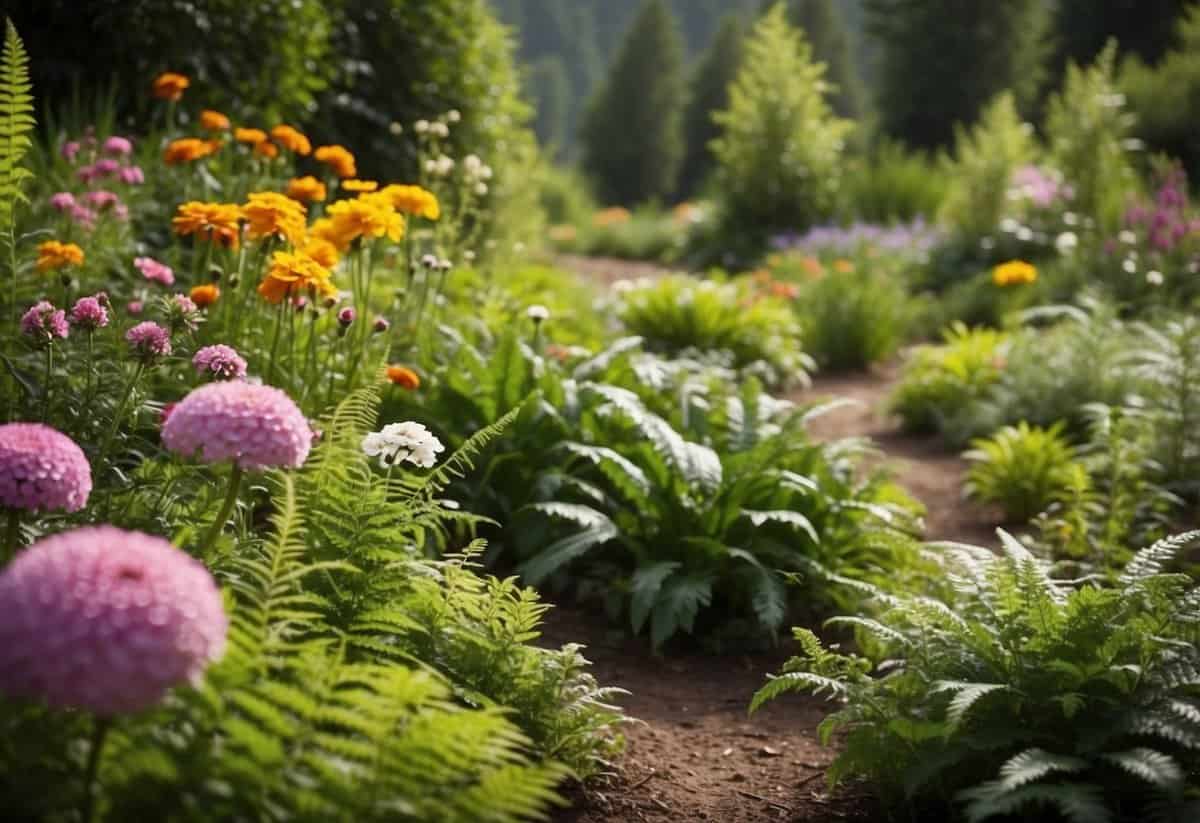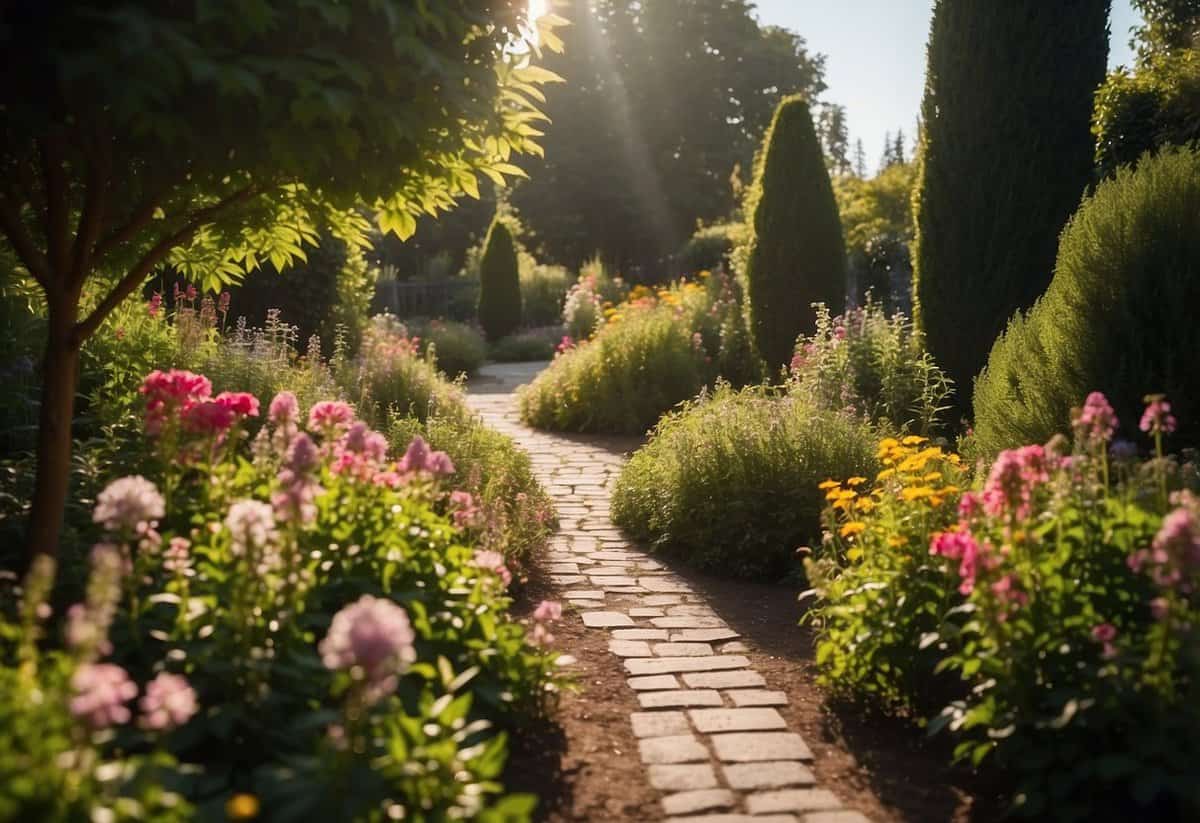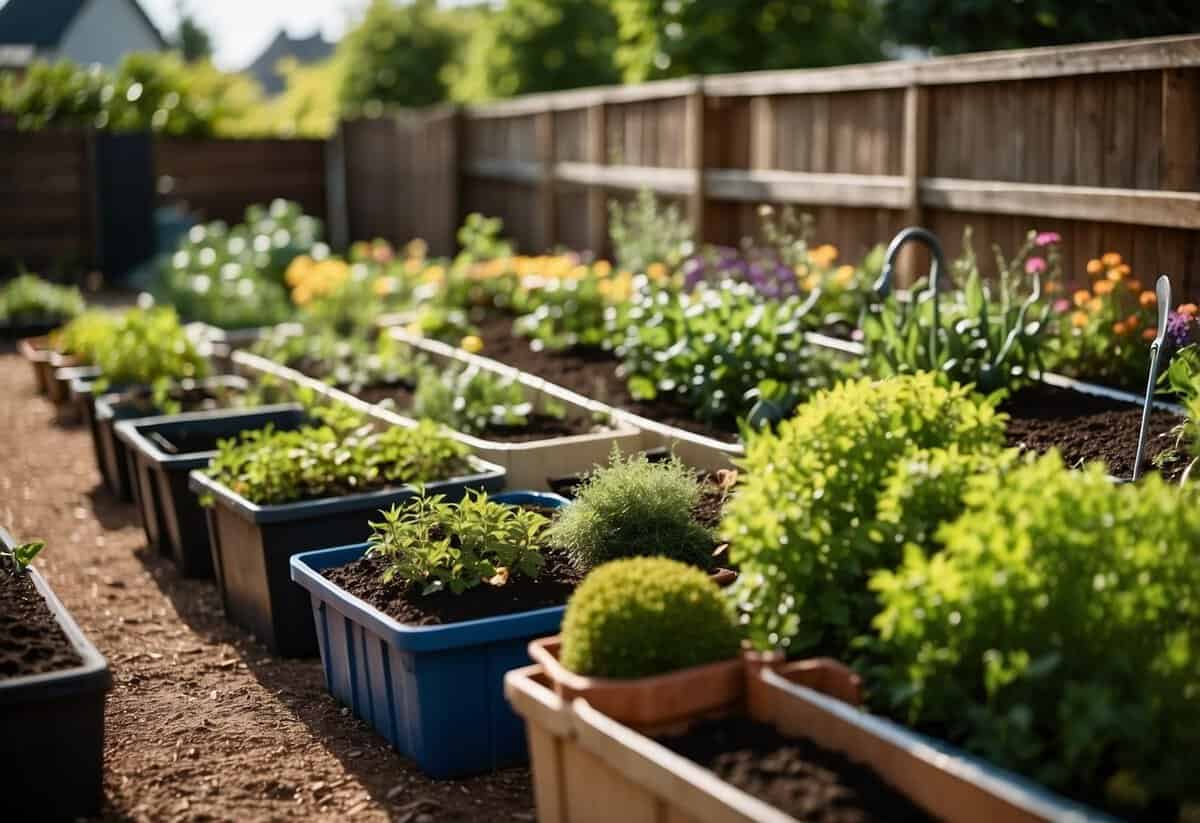How Do You Explain a Garden? A Simple and Friendly Guide
A garden is a special place where you can connect with nature and grow your own plants, whether they be vegetables, flowers, or herbs. It’s an outdoor space where you nurture various plants, creating an environment that is both beautiful and functional. Gardens can range in size and complexity, from simple potted plants on a balcony to extensive plots filled with diverse species.

You’re not just planting seeds; you’re starting a journey that involves understanding soil, water, and sunlight. By learning the basics of gardening, you can avoid common mistakes and make your garden a thriving haven. If you’re eager to start, resources like A Complete Beginner’s Guide to Starting a Garden can be very helpful.
Creating a garden also means observing the beauty of growth and change with each season. It’s a rewarding process that offers both fresh produce and a sense of accomplishment. For a step-by-step approach, check out How to Start a Garden in 10 Simple Steps, which covers essential tips from choosing the right plants to preparing the soil.
Understanding the Basics of a Garden

Gardening involves understanding how natural elements like sunlight, soil, and water interact to support plant growth. Proper care of these elements will ensure your garden thrives.
The Role of Sunlight
Sunlight is crucial for most plants. Vegetables, for instance, often need 6 to 8 hours of direct sunlight daily. Observe your garden to see which areas get the most sun. South and west-facing spots tend to receive the most sunlight.
Some plants thrive in partial shade. For example, leafy greens like spinach can tolerate and even prefer less direct light. Understanding the light needs of your plants helps ensure they grow healthy and strong.
Soil Types and Quality
Soil quality directly impacts plant health. Conducting a soil test will help you understand the pH and nutrient levels of your garden soil. Most plants prefer soil with a pH between 6.1 and 7.0.
Depending on your soil type, you might need to amend it to improve its quality. Sandy soil, clay soil, and loamy soil each have different properties. Adding organic matter like compost can enhance soil structure and fertility, providing essential nutrients to your plants.
Water and Irrigation Essentials
Water is as vital as sunlight and soil. Different plants have varying water requirements. It’s important to avoid both underwatering and overwatering. The best practice is to irrigate early in the morning when temperatures are cooler, reducing water loss due to evaporation.
Consider using drip irrigation or soaker hoses to maintain consistent moisture levels. Checking soil moisture regularly with a soil moisture meter ensures your plants get just the right amount of water. Adjusting your watering schedule based on weather and soil conditions will keep your garden healthy.
Planning and Starting Your Garden

Creating a garden involves choosing the right location, deciding what to plant, and organizing your space efficiently. These steps ensure a healthy, thriving garden.
Choosing the Right Location
Selecting the best spot for your garden is crucial. Make sure the area gets full sun, ideally 6-8 hours a day. Vegetables thrive in full sunlight, while some plants might tolerate partial shade.
Consider your climate when selecting a location. For instance, if you live in a hot, dry area, choose a spot that might get some late afternoon shade. Good soil drainage is also important. Avoid low areas where water collects as this may drown plants.
Water access is another key factor. Having a nearby water source will make it easier to keep your garden well-watered. If you’re starting a garden, aim to be close to your house for convenience.
Deciding What to Plant
Deciding what to plant depends on your preferences and climate. If you’re starting a vegetable garden, think about what your family likes to eat. For a flower garden, consider varieties that bloom at different times for continuous color.
Make sure to choose plants that are suitable for your climate. Some plants thrive in cooler weather while others need heat. Research the growing seasons for each type of plant you want to include.
Rotate crops each year to maintain soil health. For beginners, it’s best to start small with easy-to-grow plants like tomatoes, lettuce, or marigolds. Don’t forget to include herbs, which can be both decorative and useful.
Garden Layouts and Raised Beds
Creating an efficient layout helps to maximize your space. Use raised beds for better soil control and easier access. Raised beds can improve drainage, and you can fill them with high-quality soil.
Plan the layout based on plant needs. Group plants with similar water and sunlight requirements together. Use vertical space by growing climbing plants like beans or peas on trellises.
Paths are useful for navigating your garden without damaging plants. Leave enough space between rows for easy access. Raised beds and well-organized layouts not only look neat but also make gardening simpler for beginners.
Learn more about starting a garden, planning your garden, and using raised beds to make your gardening journey successful.
Cultivating Plants and Vegetation

To cultivate a thriving garden, you need to focus on planting seeds and seedlings, maintaining your plants, and understanding their growth cycles. Each step is crucial for ensuring your garden flourishes.
Planting Seeds and Seedlings
When planting seeds and seedlings, start by choosing a suitable spot that gets ample sunlight. For most vegetables, you’ll need about 6-8 hours of sun daily. Tomatoes, cucumber, and lettuce do best in these conditions.
Seeds should be planted according to their specific depth and spacing needs. For example, bury seeds 1/4 to 1/2 inch deep. Make sure to water them regularly, keeping the soil moist but not waterlogged.
Seedlings need a bit more care when transplanted. Dig a hole that can comfortably fit the young plant’s roots and fill it with soil, lightly pressing down around the base. This helps eliminate air pockets and secures the seedling in place.
Maintaining Flowers, Vegetables, and Herbs
Proper maintenance is key to a healthy garden. This includes watering, weeding, and mulching. Vegetables like peas and beans require consistent watering, especially during dry periods.
Flowers and herbs also have unique needs. Perennial plants will come back year after year with the right care. Make sure to remove any dead or diseased parts of the plants to prevent the spread of pests or diseases. Removing old flowers helps promote new growth.
Fertilizing your plants ensures they get necessary nutrients. Leafy greens like kale and lettuce benefit from a nitrogen-rich fertilizer. Rotate crops every few seasons to keep the soil fertile and reduce the risk of disease buildup.
Understanding Growth Cycles
Each plant has a unique growth cycle. Annuals complete their cycle in one season, while perennials may take several years. Tomatoes are annuals, producing fruit in a single growing season.
Recognizing the stages of growth helps in providing proper care. Flowering plants may need extra nutrients during the blooming phase. Fruits and vegetables like cucumbers and tomatoes progress from flowering to fruit setting.
Understanding these cycles allows for better planning and harvesting. For example, peas and beans mature quickly, allowing for multiple crops in a season. By knowing your plants’ growth stages, you can offer them the best care throughout their life cycle.
Managing Garden Health

Keeping your garden healthy involves several key practices. It’s about nourishing the soil with organic matter, managing weeds and pests, and keeping plants free from disease. By doing so, you create a thriving environment for your plants.
Organic Matter and Composting
Adding organic matter like compost is essential for your garden’s health. Compost enriches the soil with nutrients, improves soil structure, and helps retain moisture. You can create compost from kitchen scraps, yard waste, and other organic materials. Composting reduces waste and provides a rich, natural fertilizer for your plants.
To start composting, choose a spot in your garden and begin layering green (nitrogen-rich) and brown (carbon-rich) materials. Turn the pile regularly to speed up decomposition. Applying compost to your garden beds adds beneficial microorganisms that break down plant material, making nutrients available to your plants.
Dealing with Weeds and Pests
Weeds compete with your garden plants for nutrients, water, and light. Regular weeding is crucial. One way to manage weeds is by mulching. Mulch suppresses weeds and helps soil retain moisture. Organic mulches like straw, grass clippings, or bark chips decompose over time, adding organic matter to the soil.
Garden pests, such as insects, can damage your plants. Introduce natural predators like ladybugs or plant marigolds, which repel some pests. For persistent pests, consider using organic sprays like neem oil. Rotate crops each year to reduce pest infestations. Regularly inspect your plants for any signs of damage and address issues promptly to keep your garden thriving.
Preventing and Treating Diseases
Plant diseases like blight and mildew can devastate your garden. Clean up plant debris in the fall to reduce disease risks. Consistent watering and spacing plants properly increase air circulation, which helps prevent diseases. Choosing disease-resistant plant varieties can also reduce problems.
Treating diseases often involves removing affected plants or using organic treatments. For example, a mixture of baking soda and water can help control powdery mildew. Keep an eye out for early signs of disease, such as discolored leaves or spots, so you can act quickly. Managing plant health proactively helps maintain a vibrant and productive garden.
By focusing on these key areas, you can enjoy a beautiful, bountiful garden. Using these methods, you promote a healthy ecosystem in your garden, ensuring your plants thrive season after season.
Helpful Gardening Practices and Tools

To maintain a healthy and productive garden, employing the right practices and tools is essential. From choosing proper gardening tools to embracing modern innovations, each aspect will improve your overall gardening experience.
Using the Right Tools for the Job
Having the right gardening tools can make a big difference. For example, a leaf rake helps collect leaves and debris effortlessly. Hand tools like trowels and pruners are vital for tasks such as transplanting plants and trimming small branches.
Using a tiller makes preparing the soil easier, breaking up clumps and ensuring it’s well-drained and fertile, perfect for planting your herb garden or vegetables like chard, spinach, and zucchini. Opt for quality tools that are comfortable to use, as this will improve your efficiency and enjoyment.
When choosing tools, consider the size of your garden. A small garden might only need basic hand tools, while a larger one benefits from more specialized equipment. Consulting gardening experts on platforms like Instagram can provide helpful gardening tips and tool recommendations.
Innovations and Technology in Gardening
Modern technology has brought many beneficial devices to the gardening world. Automated watering systems and soil sensors ensure that your garden receives the correct amount of water and nutrients.
For example, using soil sensors can help you determine if your garden is alkaline or acidic, which is crucial information for growing healthy plants. Transplanting gadgets make it simpler to transfer young plants without damaging them.
Mulch and sod laying tools save time and effort in creating a polished and healthy garden bed. Additionally, mobile apps offer detailed guidance on growing zones, plant care tips, and even identify unknown plants.
By incorporating technology, you can enhance your garden’s productivity and beauty. Advanced tools and devices can transform how you grow a garden, regardless of whether you’re a beginner or have years of gardening experience.
Adopting both traditional and modern practices helps create a balanced approach that supports long-term garden success.







